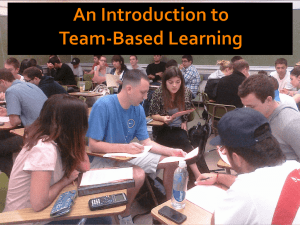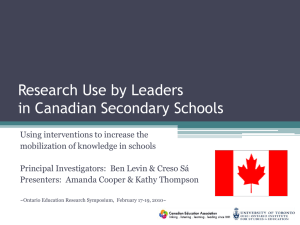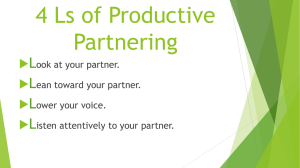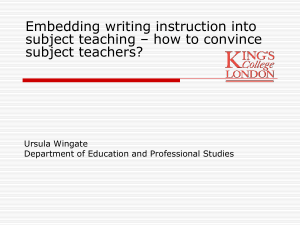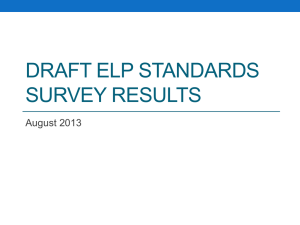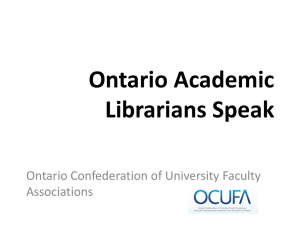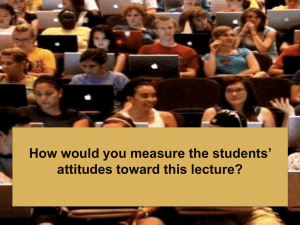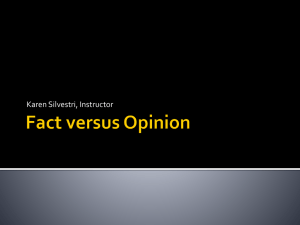What do we know about feedback and learning?
advertisement
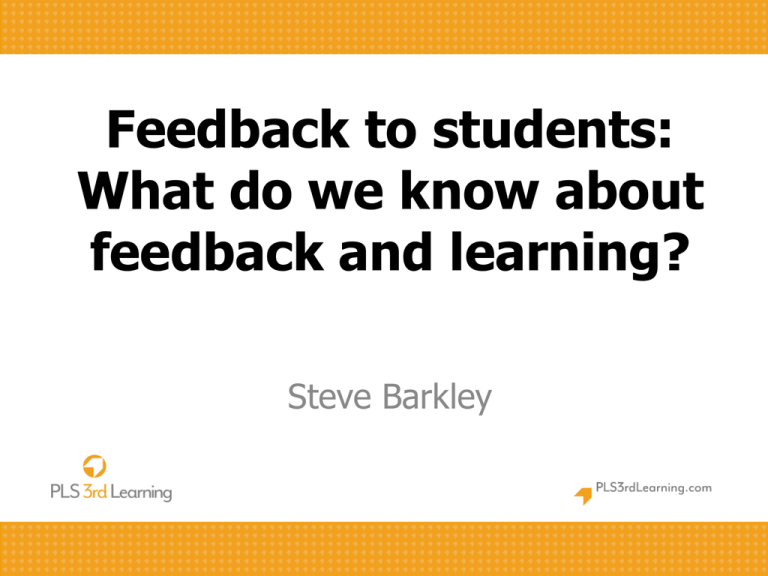
Feedback to students: What do we know about feedback and learning? Steve Barkley Grading as feedback How are grades a form of feedback? Brookhart's: Which Do You Believe? Grades should reflect achievement of intended learning outcomes. • • • • strongly agree agree disagree strongly disagree Brookhart's: Which Do You Believe? The primary audience for messages conveyed in grades are students and parents. • • • • strongly agree agree disagree strongly disagree Brookhart's: Which Do You Believe? Grades should reflect a particular student's individual academic achievement only. • • • • strongly agree agree disagree strongly disagree Brookhart's: Which Do You Believe? Grading policies should be set up to support student motivation to learn. • • • • strongly agree agree disagree strongly disagree Brookhart's: Which Do You Believe? Grades should be based on a student's standing among classmates. • • • • strongly agree agree disagree strongly disagree Brookhart's: Which Do You Believe? When students receive "poor grades" for their performance, they are motivated to do better next time. • • • • strongly agree agree disagree strongly disagree Brookhart's: Which Do You Believe? A grade should reflect the student's achievement, work habits on responsibilities like homework, class participation, and behavior. • • • • strongly agree agree disagree strongly disagree Assessment is the Bridge Between Teaching and Learning Dylan Wiliam http://www.youtube.com /watch?v=jtlLp_ZsyvQ Formative Assessment Provides… Teachers with direction for instruction Students with knowledge to advance toward learning goal Reporting Information Growth and Progress Information • Change in achievement of learning goals within subject area over time…used to report progress Learning Skills Information • Information from observing student behaviors that promote learning (like effort and work habits). Grading Information • Information from summative classroom assessments used to communicate achievement of intended learning goals against standards Dylan Wiliam’s five key strategies for assessing student learning: 1. For each important new concept or assignment, teachers should make the learning expectations clear and share with students the criteria for successfully meeting those expectations. This information should be provided on a daily basis and revisited at the end of each class to evaluate progress toward these goals. 2. Use data from classroom discussions, student answers and learning tasks to revise lessons and activities. Teachers can use various techniques that engage all students in discussion and use revealed evidence of student thinking and understanding as they plan future. Dylan Wiliam’s five key strategies for assessing student learning: 3. Provide feedback that clearly and explicitly identifies what needs to be improved in order to move learners forward and promote students’ understanding of concepts. To best meet students’ immediate learning needs, teachers should use this evidence to adapt instruction in real time. 4. Encourage students to serve as instructional and learning resources for one another on a daily basis. 5. Encourage students to take responsibility for their own learning. http://www.apa.org/education/k12/classroom-data.aspx?item=3# Feedback is the current that flows between the teacher and the learner leading to the desired outcomes Teaching Learning Assessment Assessment and Feedback http://www.apa.org/education/k12/classroom-data.aspx?item=2# Don’t think that feedback itself is enough to make an assessment formative. Although providing feedback is a necessary first step, an assessment only becomes formative when the information fed back to the learner is used by the learner to improve future performance. Therefore only feedback that is potentially useful to the learner is formative. For example, if a teacher says, “That’s very creative,” the student does not know why her product is creative, or how to make future products creative. An exception to this occurs when the teacher has already provided the criteria for what a “creative” response looks like. Top Two Study Strategies • Practice Test • Distributive practice http://www.aft.org/pdfs/americaneducator/fall2013/Dunlosky.pdf Inside the Black Box Raising Standards Through Classroom Assessment Paul Black and Dylan Wiliam Feedback to any pupil should be about the particular qualities of his or her work, with advice on what he or she can do to improve, and should avoid comparisons with other pupils. For formative assessment to be productive, pupils should be trained in self-assessment so that they can understand the main purposes of their learning and thereby grasp what they need to do to achieve. http://weaeducation.typepad.co.uk/files/blackbox-1.pdf Making Suggestions Phrase Positively Clear and Specific Congruent Pay-off Compliment Praise Approval Approval H.I.P. Personalize Cite the Specifics Students Using Feedback 1. Reflecting can improve your performance on your future assessments by helping you identify what you did well and where you can improve. 2. Without reflection, you keep doing things in the same way and never improve. http://evidencenet.pbworks.com/f/guide+for+students+FINAL.pdf Helping Students Reflect on Feedback What are the main points in this feedback? _____________________________________________________________ _____________________________________________________________ _____________________________________________________________ _____________________________________________________________ What things attracted positive feedback? _____________________________________________________________ _____________________________________________________________ _____________________________________________________________ What things attracted negative feedback? _____________________________________________________________ _____________________________________________________________ _____________________________________________________________ How can I use this feedback in a future assessment? _____________________________________________________________ _____________________________________________________________ The use of technology can enhance student engagement with feedback. Returning feedback online enables students to receive feedback in a legible format, and to engage with it in privacy. Electronic templates aligned with assessment criteria and comment banks enable feedback to be generated in a consistent and equitable way. http://evidencenet.pbworks.co m/f/guide+for+academic+staff +FINAL.pdf

